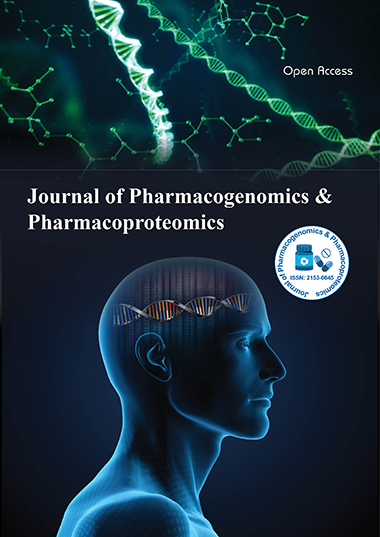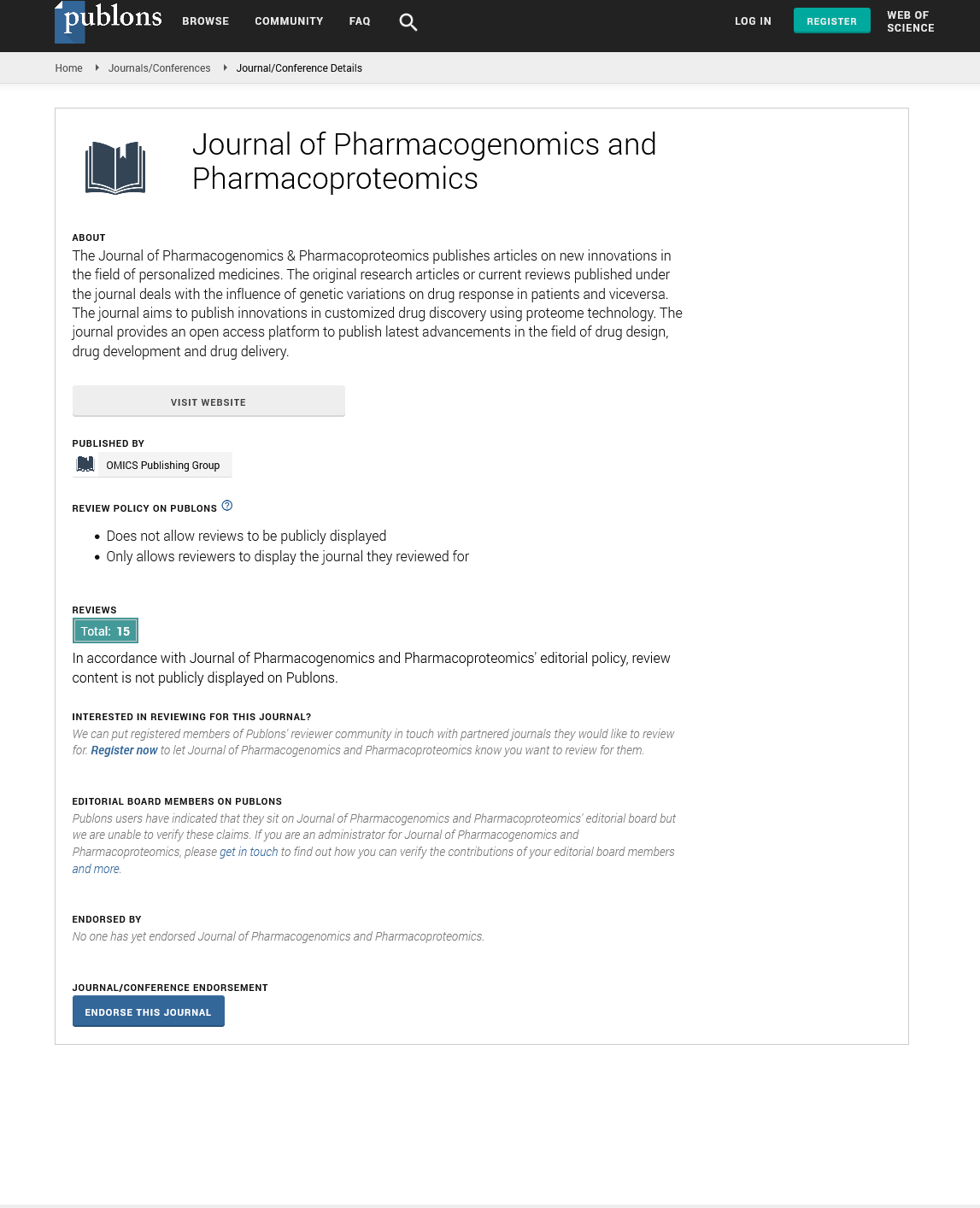Indexed In
- Open J Gate
- Genamics JournalSeek
- Academic Keys
- JournalTOCs
- ResearchBible
- Electronic Journals Library
- RefSeek
- Hamdard University
- EBSCO A-Z
- OCLC- WorldCat
- Proquest Summons
- SWB online catalog
- Virtual Library of Biology (vifabio)
- Publons
- MIAR
- Euro Pub
- Google Scholar
Useful Links
Share This Page
Journal Flyer

Open Access Journals
- Agri and Aquaculture
- Biochemistry
- Bioinformatics & Systems Biology
- Business & Management
- Chemistry
- Clinical Sciences
- Engineering
- Food & Nutrition
- General Science
- Genetics & Molecular Biology
- Immunology & Microbiology
- Medical Sciences
- Neuroscience & Psychology
- Nursing & Health Care
- Pharmaceutical Sciences
Commentary - (2023) Volume 14, Issue 1
Genetic Variations and Adverse Drug Reactions of Drug Individualization and Drug Metabolism
Ellen L*Received: 02-Jan-2023, Manuscript No. JPP-23-19630; Editor assigned: 06-Jan-2023, Pre QC No. JPP-23-19630 (PQ); Reviewed: 13-Jan-2023, QC No. JPP-23-19630; Revised: 27-Jan-2023, Manuscript No. JPP-23-19630 (R); Published: 03-Feb-2023, DOI: 10.35248/2153-0645.22.14.034
Description
Adverse Drug Reactions (ADR) is still a prevalent and significant issue in healthcare, numerous ADR types are predictable, dosedependent, and connected to the pharmacodynamic and pharmacokinetic properties of medications. However, certain reactions are idiosyncratic, unpredictable, and doseindependent. Recent research has shown that ADRs have a high genetic tendency, and the risk variations connected to this predisposition include HLA alleles, drug-metabolizing enzymes, and drug transporters. These discoveries not only shed light on the pathophysiology of ADRs but also help design practical tests that would lower the prevalence of ADRs.
In the last ten years, human genetic research has advanced incredibly. Understanding of the human genome and disease pathogenesis has significantly improved due to international research collaboration and improvements in genome sequencing techniques. The information from the human genome in particular gives us new concepts to understand illness susceptibility and therapeutic responses. Pharmacogenomics and personalized medicine attempt to identify distinctive molecular characteristics between individuals and use this genetic data to precisely diagnose a patient's disease, choose better treatments, and reduce any potential drug side effects.
Since ancient times, physicians and other healthcare professionals have attempted to personalize drug therapy by adjusting medicine selection and dosage for each patient. The foundation for individualization is provided by knowledge about the etiology of the illness, the drug's mode of action, and exposure-response correlations. There are numerous ways to individualize care, including population (sparse sample) pharmacokinetics, therapeutic medication monitoring, and, more recently, pharmacogenomics. Antibiotics could be chosen based on minimum effective doses and bacterial sensitivity. The objective of individualization is to increase a drug's effectiveness, lessen its side effects.
Drug models and simulation have been helpful for integrating information from many different disciplines as a result of the development of technology and databases. A molecular approach to individualization has been made possible by Physiology Based Pharmacokinetic (PBPK) models, and individualization has also been made possible by enrichment-based clinical trial designs. Successful gene therapy, vaccinations, able to more accurately technologies, and so-called drug therapy and drug metabolism are contribute to individualization. The challenges in prescribing medications that were previously highlighted are not due to the training or experience of the doctors, but rather are due to the inability to confidently depend on the label claims of efficacy, safety, and interchangeability of new medications within classes. An inadequately well-crystallized knowledge base about the appropriate use and interpretation of terminology like equivalence similarity, pharmaceutical equivalence/therapeutic equivalence, and bioequivalence/bioavailability appears to be the common denominator among these issues. The growing usage of generic medications and the interpretation of phrases like switch ability and prescribability further exacerbate issues.
Most medications are altered chemically by various biological processes to produce substances that can be eliminated from the body more quickly. These chemical changes, sometimes referred to as biotransformation, predominantly take place in the liver. Any clinician who regularly administers medication to patients should be interested in learning more about these changes in chemical activity since they are essential to using the best pharmacological intervention for any patient. The interprofessional team's involvement in treating patients who are taking many drugs is highlighted in this activity, which also covers drug metabolism, biotransformation, and pharmacological treatments. There are 3 phases to drug metabolism. Enzymes like cytochrome P450 oxidases incorporate reactive or polar groups into xenobiotics during phase I. Phase II reactions then include conjugating these changed molecules to polar compounds. Transferases enzymes like glutathione S-transferases are responsible for catalyzing these processes. Until being recognized by efflux transporters and expelled from cells, conjugated xenobiotics may undergo urther processing in phase III. Lipophilic substances are frequently transformed by drug metabolism into hydrophilic byproducts that can be removed more rapidly.
Citation: Ellen L (2023) Genetic Variations and Adverse Drug Reactions of Drug Individualization and Drug Metabolism. J Pharmacogenom Pharmacoproteomics.14:034.
Copyright: © 2023 Ellen L. This is an open-access article distributed under the terms of the Creative Commons Attribution License, which permits unrestricted use, distribution, and reproduction in any medium, provided the original author and source are credited.

